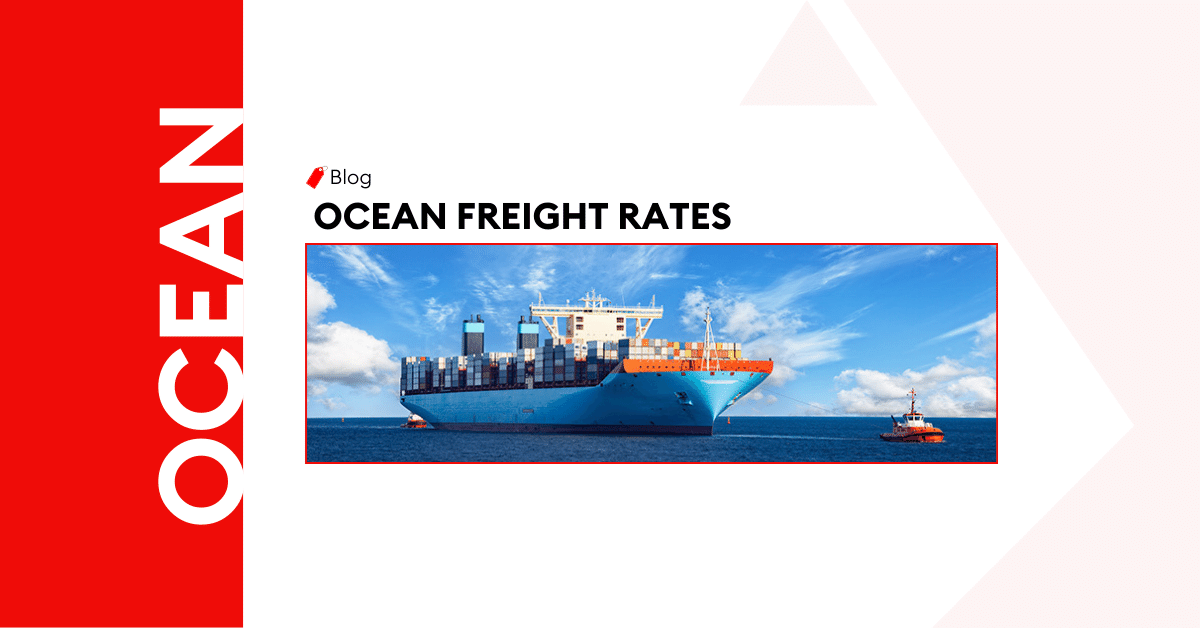
Understanding Ocean Freight Rates – An Extensive Guide
Ocean freight provides an efficient way of moving cargo via sea. Its significance in international trade cannot be neglected as it is the most viable and cost-effective way of moving bulk and heavy cargo across borders. However, this service attracts its cost, hence the ocean shipping rate.
As a business, it’s vital to understand the dynamics behind ocean freight rates. This aids in creating a good view of your logistics and shipping cost and making proper plans, budgets, and decisions down the chain. Understanding ocean freight rate also gives you a good ground for negotiations with freight forwarders and shipping carriers as you are already in sync with the rate system.
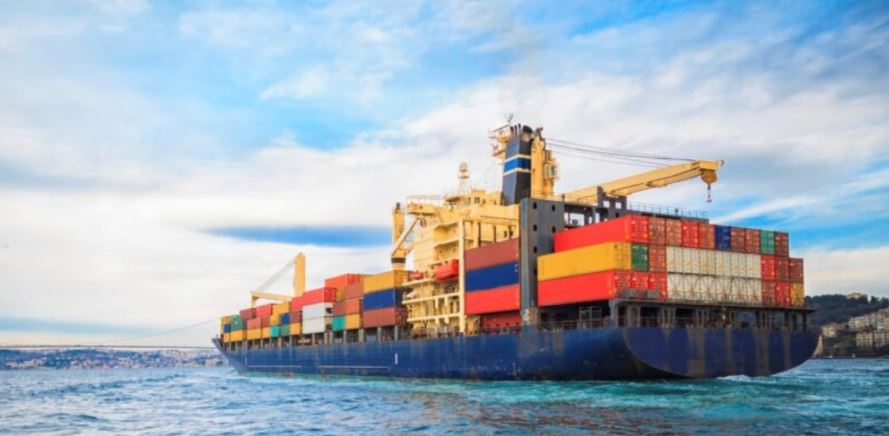
This post has it all covered as we will touch on the types, factors, and quotation processes regarding ocean freight rates.
Factors Affecting Ocean Freight Rates
Of course, there are bases and triggers that control international shipping rates. These rates are not established by choice or perception but are dependent on several factors. Let’s have a look at these factors.
Market Forces
Supply and Demand
This is a primary market force and goes a long way to determine things happening in the business space. The dynamics of supply and demand have effects on ocean freight rates. When there is a high demand, it triggers an urgent need to boost supply to meet the demand. As a result, shipping activities are on the increase, demanding more operational hours and costs.
On the other hand, ocean freight rates are lesser when the demand is low or stable as this allows for the standard flow of supply. A good show of supply and demand dynamics is seen in peak seasons.
Trade Imbalance
The trade imbalance is closely tied to supply and demand as it is one of its causes. However, we are considering it as a separate factor since it has other causes or triggers. A trade imbalance is an economic situation where a country’s imports and exports are not balanced, with one exceeding the other. As a result, the country’s economy runs into either a surplus or deficit.
Trade imbalance in a trade lane can result in the following which in turn affects ocean shipping cost.
- The country with the surplus trade tends to accumulate more containers, which is a shortage on the path of the trading partners. In a bid to evenly distribute containers, more cost is accrued, which in turn increases the ocean freight rate.
- Shipping lines tend to transport to surplus regions for maximum gain. As a result, a lesser number of shipping lines becomes available for deficit regions, which may likely affect shipping rates.
- Freight forwarding competition will increase as shipping lines bid for limited spaces on vessels. This will also increase the freight rate.
Economic Conditions and Trade Patterns
The state of the economy and trade patterns are also market forces that affect the ocean shipping rate. One economic condition is currency fluctuation and the difference in currency values plays a role in establishing international shipping rates.
A good economic stance, that is its growth, GDP, and stable inflation rate tends to boost trading volume which in turn pushes up ocean freight rates.
Operational Factors
Vessel Capacity
Shortage of vessel capacity leads to intense competition as several freight forwarders want to transport their cargo at the same time. Since there is limited capacity, freight forwarders tend to bid with higher fees to secure a space.
Fuel Prices
Global fuel prices are prone to fluctuation. So, the higher the fuel prices, the higher ocean freight rates may become. It’s impossible to move vessels without fuel so shipping lines must purchase enough fuel irrespective of the price. As a result, the cost is incorporated into the freight rates.
Port Congestion
When there is a backlog of ships waiting to unload cargo, it results in port congestion- too many cargoes waiting to be shipped. This can be caused by operational inefficiencies, equipment shortages, trade restrictions, etc.
Port congestion tends to increase ocean freight costs as there will be;
- Increased operational cost
- Detention charges due to keeping cargo beyond the agreed time
- Cost to compensate for limited spaces
Container Inventory Imbalance
Scarcity or shortage of containers influences international shipping costs. Shipping carriers will need to distribute containers, which will be cost-intensive and in turn, affects freight cost.
Regulatory and Geopolitical Influences
Trade Policies and Tariffs
Trade policies set by a government can influence freight costs. These policies cover tariff percentages, customs processes, documentation, restrictions, and trade agreements. When these policies are tough and percentages high, it leads to an increase in international shipping costs as shipping carriers are making efforts to offset these costs.
Political Stability and Regional Conflict
Political instability results in inconsistent trading policies, which tends to affect economic growth. Or, when there is conflict in a region, shipping becomes difficult at this border. As a result of these factors, the cost trends to increase.
Types of Ocean Freight Rate
Let’s see the different types of ocean freight rates that exist;
Short-term Rates
This rate applies to cargo for a short period, typically less than a year. It has benefits for small, medium, and large organizations. Some benefits include:
- Cost savings; since it offers a more competitive pricing structure than the long term. It gives businesses of different sizes an opportunity to observe the market for fluctuations and take good advantage.
- It provides flexibility as a business can optimize and respond to different market conditions.
- It reduces liability and commitment in the long run.
- It is a viable rate system for businesses that want to test new markets.
Long-Term Rates
Ocean freight rates can also be on a long-term basis. This involves shipping agreements and fees paid for a long period. Some benefits include:
- It makes it easier to manage logistic budgets as businesses can lock in rates for a long time.
- It mitigates the risk of market fluctuations as you work with what has already been agreed.
- It helps curb the issue of vessel space and capacity. Irrespective of the time, your cargo is already catered to.
- It builds a strong partnership between businesses and shipping lines, which can be beneficial over time.
Spot Rates
This is an immediate rate charged for a single shipment, i.e., businesses pay the current rate for shipping cargo. Spot rate suffices for short-term needs as there is transparency and flexibility to adjust terms based on fluctuations. It also helps businesses with timing and carrier selection. Spot rate gives room to change a shipping carrier without running into a loss. It provides a good advantage in seasons of low demand.
Contract Rates
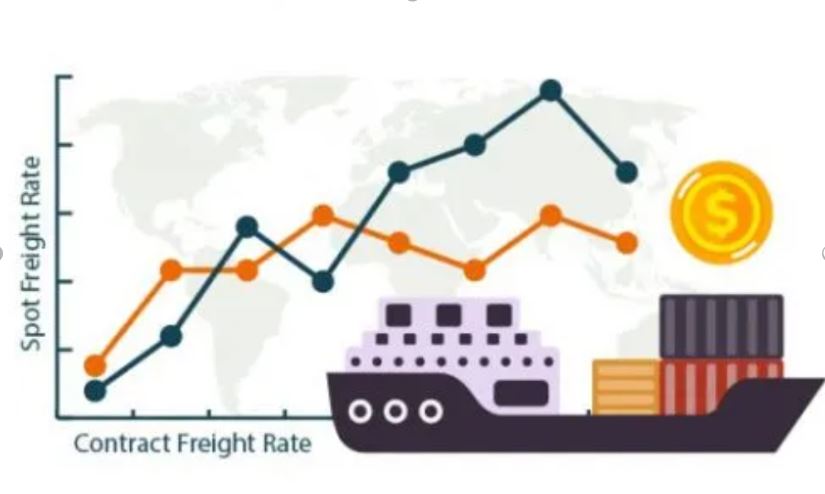
This is the opposite to spot rates. They are rates agreed upon with a long-term commitment. Beyond the time frame, contract rates involve businesses obliging to a Minimum Quantity Commitment (MQC). This specifies the volume of cargo for the agreed period.
Its advantages include:
- Stability, which aids businesses plan and predict shipping costs.
- Vessel space is guaranteed.
- An ideal solution to save cost by overcoming market price fluctuation.
- Help build long-term relationships is useful for future transactions.
Market Rates
This involves the prevailing prices in the market that now influences freight rate indices. Market rates fluctuate due to the forces of demand and supply, political influences, and more. When the market rate is affected, it rubs on the ocean freight rate.
Components of Ocean Freight Rates
Ocean freight rate is a large body made of three different parts. There exist:
Basic Freight Charges
This is the normal shipping charge on cargo. It is void of additional fees but covers the shipping line’s fee for transporting the cargo via sea and handling cargo at the terminals. This is influenced by fuel prices, demand, and vessel capacity.
Surcharges
This goes beyond the basic charges. They are additional charges imposed due to different reasons. Let’s see what they are.
Bunker Adjustment Factor
Normally the fuel cost is added to the basic freight rate. However, the fluctuations in bunker prices have driven shipping carriers to charge additional fees to offset the cost.
Currency Adjustment Factor
Cross-border trade and transportation put into consideration the currencies of both trading nations. Currency values are not content at all times and may change within the transit period when transporting the cargo. To cater to these changes, an additional fee is imposed, termed as currency surcharge.
Peak Season Surcharge
Demand is pretty high in peak season, which will require extra operational efforts. This in turn attracts extra cost. So, the peak season surcharge is an additional fee that will offset the cost.
Security Surcharge
This is an additional fee to offset the cost of providing security to cargo. This includes areas with known security challenges.
Ancillary Cost
These are extra costs on insurance and customs duties and documentation. These two are vital situations that cannot be excluded from the shipping system. Insurance is needed to minimize the impact of cargo loss or accidents and duties and documentation are also compulsory. Shipping carriers are obliged to pay fees for insurance, customs duties, and documentation. Hence, the reason for the extra charge imposed.
Understanding Freight Rate Quotations
Freight rate quotation is a process where the estimate of shipping prices is determined and declared to the cargo owner. Let’s dive deeper into the process.
Freight Rate Quotation Process
The process involves a few steps.
- Request for Quotation (RFQ): It all starts with the cargo owner initiating and requesting a quotation from the shipping carrier or freight forwarder.
- Documentation: This involves the review of the request and submission of necessary documents by the cargo owner. The documents include invoices, packing lists, etc.
- Freight Calculation: The shipping line begins to calculate the fees. This calculation is based on components such as cargo type, volume, dimension, surcharges, custom fees, etc.
- Quotation Submission: At this stage, the calculation has been completed and the quotation is submitted to the cargo owner.
- Negotiation and Confirmation: The cargo owner may negotiate the prices of fees on the quotation with the shipping line or freight forwarder. Upon agreement, the quotation is confirmed, hence commencing the shipping process.
Rate Quotation Structure
This refers to the framework of the quotation, that is how it appears. We will explain the elements as they are arranged to form the quotation.
- Shipment Details: This is where details of the cargo come into place. You’ll find details such as cargo type, dimensions, origin, and destination ports.
- Freight Charges: The breakdown of the basic and additional fees appears in this section.
- Documentation Charge: This is where the administrative fees are broken down. It includes fees for documentation such as customs, bill of lading, etc.
- Additional Service: In the case where the shipping line will offer extra or special services, they are clearly stated in this section.
- Terms and Conditions: Terms of the agreement are outlined in this section. The terms cover payments, transit time, liabilities, and other necessary information.
Incoterms and their Impacts on Freight Rates
Incoterms stand for International Commercial Terms and they define the rights of both trading parties in a cross-border transaction. The commonly used incoterms include:
- Free on Board (FOB): This indicates that the cargo owner’s responsibility ends when cargo is loaded onto vessels in the port of origin. So, the shipping carrier bears the responsibility from that time.
- Cost, Insurance, and Freight (CIF): This shows that the cargo owner is responsible for the freight cost, insurance, and delivery to the destination port. Then the buyer takes responsibility once the cargo is unloaded.
- Cost and Freight (CFR): Works the same as CIF but does not include the cargo owner paying insurance.
- Ex Works (EXW): The seller makes the cargo available at the buyer’s premises. The buyer takes the cost of transportation.
- Delivered Duty Paid (DDP): The seller takes responsibility for handling duties and delivering cargo to the desired destination. Then the buyer takes ownership upon delivery.
- Delivered at Place: Pretty similar to DDP but the buyer is responsible for unloading the goods.
These Incoterms display the responsibility of cargo owners and shipping carriers in delivering goods. These services attract cost and in turn, affect freight rates.
How Al Sharqi Can Help
You need not burden yourself with the technicalities of ocean freight rates since we at Al Sharqi can do it all for you. With several years of experience, we have deep knowledge of how ocean freight rate works. So, we can be your advantage.
We are your ideal logistics and supply chain partner who can do the following:
- Monitor the market to determine the best type of ocean freight rate for your business.
- We will help make the quotation process simple by sending in the request and negotiating for the best rate in the shipping market.
- Ensure shipping carriers begin the shipping process in due time.
- Ensure efficient shipping by offering you an ideal ocean freight solution to meet your needs.
Let Al Sharqi do the job for you!! Contact us
Conclusion
It’s impossible to ship your cargo without paying up freight fees and a good understanding of the rate keeps you in the best position. There are different types of shipping rates to meet both short-term and long-term needs as stated in this post. The process of quotation begins with the request and ends with negotiations and confirmation. In all, it’s ideal to keep learning and staying adaptable in the shipping industry since it is ever–evolving.
Frequently Asked Questions
FCL (Full Container Load) involves a shipper filling a container with his cargo and then shipping it out. It is for large-volume shipments.
LCL (Less than Container Load) involves consolidating the cargo of different shippers into one container for shipping. It is for shippers with less volume of cargo.
It’s pretty impossible to give an estimate of ocean freight cost. Several factors come to play and the shipping lines are significant deciders.
You have to equip yourself to negotiate freight rates. The following keys are required
Research to get information on the current market condition
- Consolidate your shipment
- Leverage shipping volume
- Ask for multiple quotes
- Establish a good relationship with carriers
- Develop good negotiation skills
There is no known time range for freight rate changes. It changes as market conditions and other factors play their part.
You should consider factors such as long-term or short-term basis, price stability, flexibility, relationship with carriers, volume, and regularities. Putting all these factors in place with the details on both rates as explained in the sections above will help make an ideal decision.
Our customer service team is happy to assist you with planing your next booking.

Related Articles
High Tech logistics solutions for Computer Parts & Accessories Shipment | A Case Study
Your trusted partner for secure storage and ocean freight. Summary This case study focuses on Al Sha
Al Sharqi Shipping and Logistics Wins Maersk Most Valuable Partner 2023 Award
Dubai, UAE – May 24, 2024 – Al Sharqi Shipping is proud to announce that it has been awarded the
Sustainability Milestone: Al Sharqi Shipping Receives 2023 Maersk ECO Delivery Certificate158
Al Sharqi named as the Maersk Line UAE Most Valuable Partner 2022 Dubai, UAE – Al Sharqi Shipping




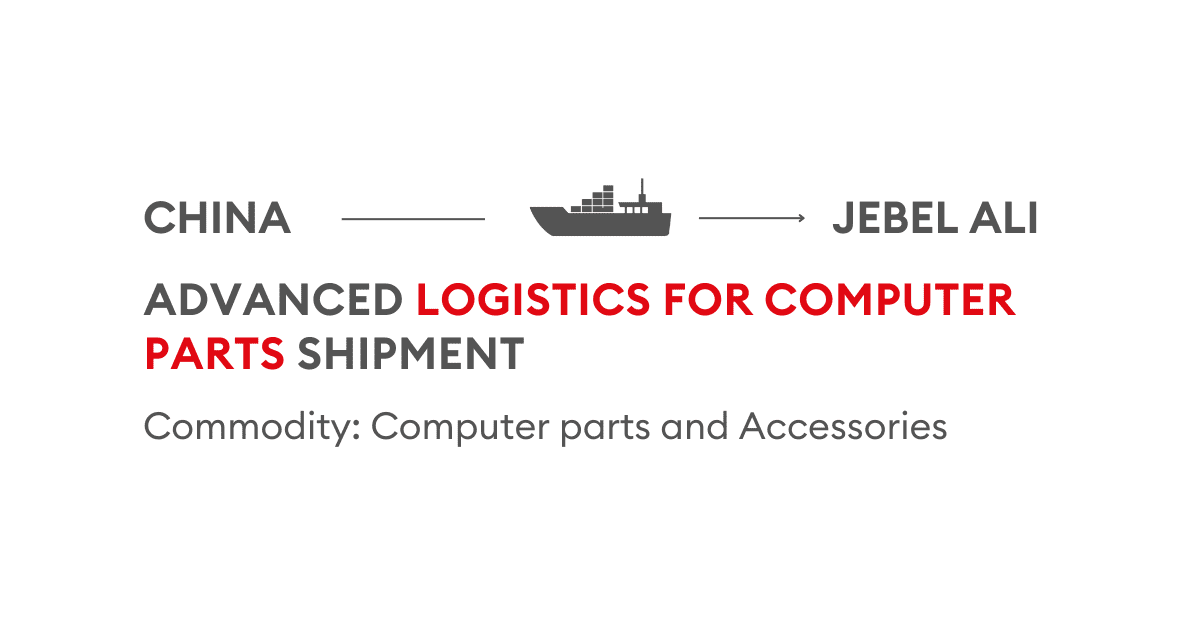
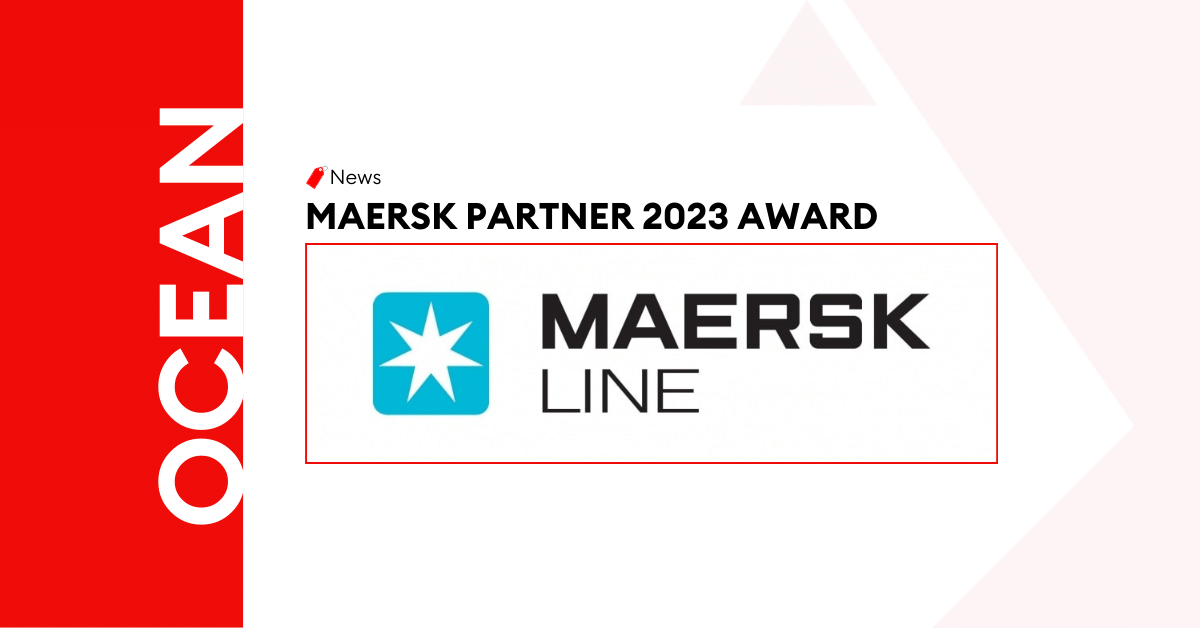

Post a comment
You must be logged in to post a comment.